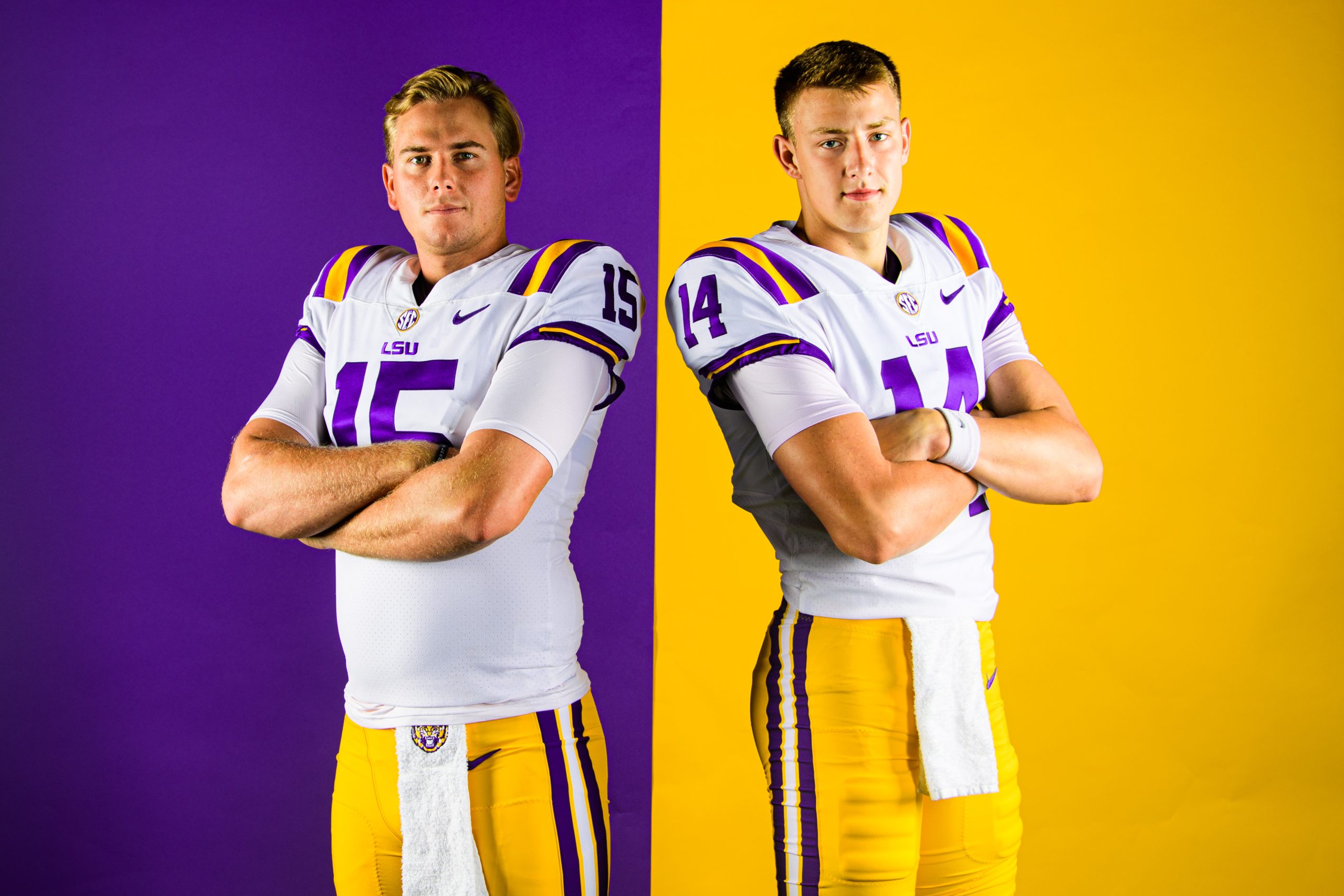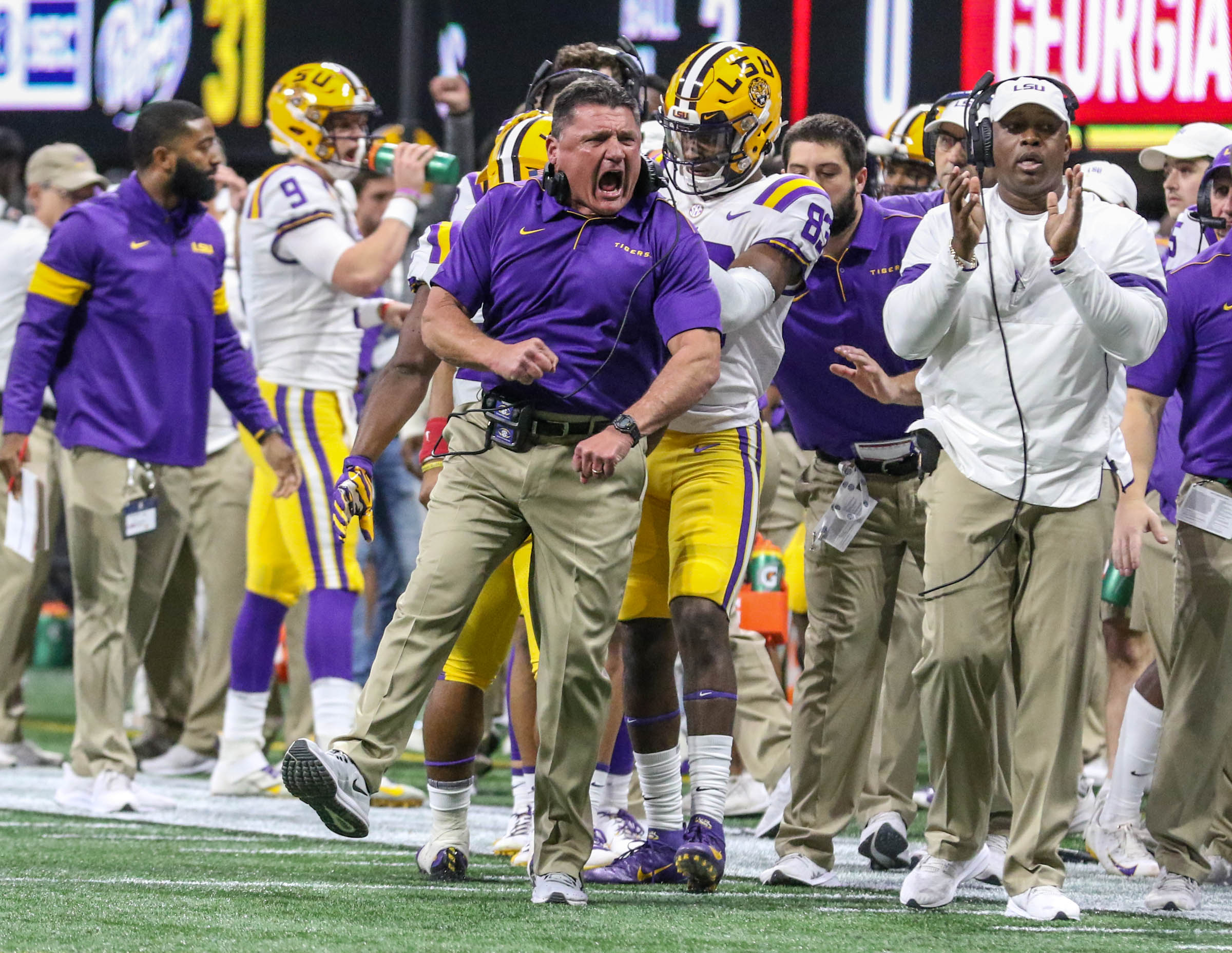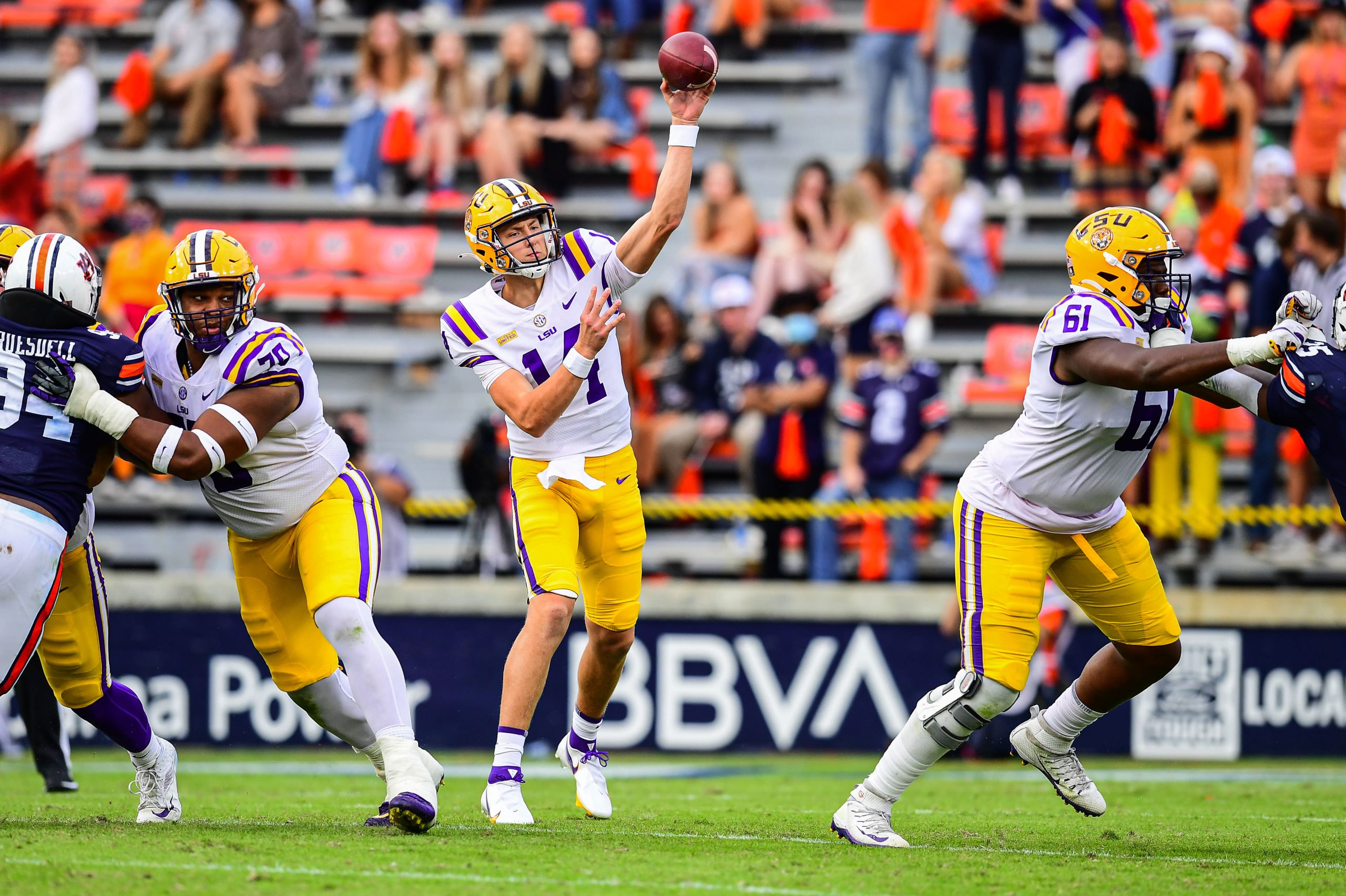
It’s one of the most despised phrases in LSU football history.
Two-quarterback system.
No, not a plan where one QB starts and plays the majority of the snaps while the backup plays mop-up minutes late in blowout wins.
It’s also not having a backup QB limited to a certain package of plays suiting his strengths for specific down-and-distance situations, a la the Drew Brees-Taysom Hill Saints’ QB tangos in recent seasons.
A true two-quarterback system is the kind the late Charles McClendon employed as LSU’s head coach from 1962 to 1979.
Eighteen different quarterbacks started for McClendon in his 18 seasons. None of them started every game in a season. It was also a rarity if a starting QB played several consecutive series, much less an entire game.
McClendon’s standard norm of procedure often was alternating his QBs series to series, no matter if one QB was more effective than the other.
Research a bit and it’s easy to find many examples like the LSU vs. Miami game in 1965 in which starting Tigers’ QB Nelson Stokley led the offense to three TD drives. But after each score, McClendon inserted backup QB Pat Screen for the ensuing possession (all produced no points) to stick with his QBs alternating each series strategy, come hell or high water.
In almost two decades leading the Tigers, McClendon had one quarterback – Bert Jones in 1973 – earn first-team All-America honors. And Jones, easily the best passing QB who ever played under McClendon, accomplished that feat alternating with the option-running Paul Lyons.
“I’m the only quarterback in the history of 1A college football,” Jones has said repeatedly through the years, “who played only half the time and was second string, yet was a consensus All-American and a first-round NFL draft choice.
“You go in for a series, and then come out for one or two and then go back in. The LSU coaching staff was old school and not very smart at either understanding or adapting.”
Since Alan Risher made history in 1980 under then-new coach Jerry Stovall as the first LSU QB in almost 20 years to be the clear-cut starter playing nearly 100 percent of the snaps, LSU has gone in and out of two-QB phases.
Jeff Wickersham, Tommy Hodson, Herb Tyler, Rohan Davey, Matt Mauck, Marcus Randall, JaMarcus Russell, Matt Flynn, Zach Mettenberger, Danny Etling and 2019 Heisman Trophy winner Joe Burrow all emerged as alpha dog starting QBs.
They eventually dominated playing time because there was a defined line of demarcation between the effectiveness of the quarterbacks battling to become a starter.
Three years ago after LSU’s 2018 spring practice, there was no separation among the Tigers’ QBs battling to replace the graduated Etling.
Then-freshmen Myles Brennan and Lowell Narcisse and sophomore Justin McMillan were all equally unimpressive. LSU’s season looked in trouble until the Tigers landed Ohio State grad transfer Burrow in early summer.
And just like that, especially when one-year wonder passing game coordinator Joe Brady showed up in 2019 to take the Tigers into the nuclear age of uptempo spread offense, the course of LSU quarterback recruiting changed forever.
“The way the 2019 offense produced and the talent we had that went to the NFL, the elite offensive recruits have become more attracted to LSU and the system,” said Austin Thomas, the Tigers’ football general manager overseeing roster management. “We are able to get in on the elite, elite recruits a bit easier than in the past because of the system we’ve been running on offense.”
Now, LSU’s QB room is truly loaded with talent specifically fitted to the offensive scheme, which is something that didn’t often happen under previous coaches.
For the first time in memory, LSU has two quarterbacks – senior Myles Brennan and sophomore Max Johnson – who could start and win for any team in the NFL feeder system known as the SEC. There’s also a four-star freshman signee Garrett Nussmeier who impressed in the spring.
In the on-deck circle is five-star high school senior commit Walker Howard, rated by 247Sports as the second best QB in the nation in the Class of 2022.
If you think this preseason’s starting QB is going to be fierce, wait until next year.
Since Orgeron took charge of the LSU program as interim coach four games into the 2016 season before being named head coach eight games later, he hasn’t been a two-QB system guy.
Etling started all 21 games he played for Orgeron in 2016-17 and played the overwhelming majority of the snaps. Burrow did the same in his 28 starts in 2018-19.
Brennan was treated the same way in his three starts to open last season before sustaining a season-ending abdomen tear in game three. Then-freshmen TJ Finley and Johnson were handled similarly in their five and two starts respectively.
That said, it doesn’t guarantee it will play out that way this season.
Orgeron’s bottom line is he’s going to do whatever it takes to give his team a chance to win. So, if he and new offensive coordinator Jake Peetz believe there is miniscule separation between Brennan and Johnson, they’ll have to figure a way to play both of them.
Or as late Ole Miss coach Billy Brewer always answered when asked about if he planned to play one or two QBs in an upcoming game – “I’m gonna play bof’em.”
Some of the best offensive minds in college football history, like former Florida head coach Steve Spurrier, have done it a number of ways.
“I’ve alternated quarterbacks from play-to-play like I did with Doug Johnson and Noah Brindise for the last few games in 1997,” Spurrier said in a recent phone interview. “I’ve been known to take a quarterback out of the game if he’s struggling and play the other one.
“I benched (1996 Heisman Trophy winning QB) Danny Wuerffel in a game against Georgia in 1993 because was having trouble throwing a wet ball. (Backup) Terry Dean was throwin’ it around pretty good in pregame warmups, so I put him for Danny and we won. And in 2000, I alternated Jesse Palmer and Rex Grossman.
“If you’ve got two quarterbacks pretty close in talent, there’s nothing wrong with playing both of them. I don’t think you should do it the whole year. But every now and then as a change of pace, it can be very effective.”
That might be food for thought for Orgeron, who described Brennan and Johnson at July’s SEC Kickoff Media Days as “championship quarterbacks.”
But for a two-QB system to work, for even part of the season, there must be a total buy-in from Brennan and Johnson who have said in the past winning games is their bottom line.
“There’s no bad blood, it’s just great healthy competition between the two,” LSU fifth-year senior starting offensive tackle Austin Deculus said of Brennan and Johnson. “And they really lean on each other to get each other better.”
So maybe, at different times during the 2021 LSU season, two heads, four legs, a righty throwing arm and a lefty throwing arm just might work.
But whether Tigers can challenge for a national championship this or any other year, doing that an entire season is a tough road to consistently navigate.




Has any team in the history of the universe ever won the cheese with alternating quarterbacks even once?
Ohio State, Alabama, and LSU all three did
I believe that Florida won the natty with Chris Leake and Time Tebow alternating.
No, they didn’t. Tebow was strictly goal-line and short yardage. Situational QB, not alternating.